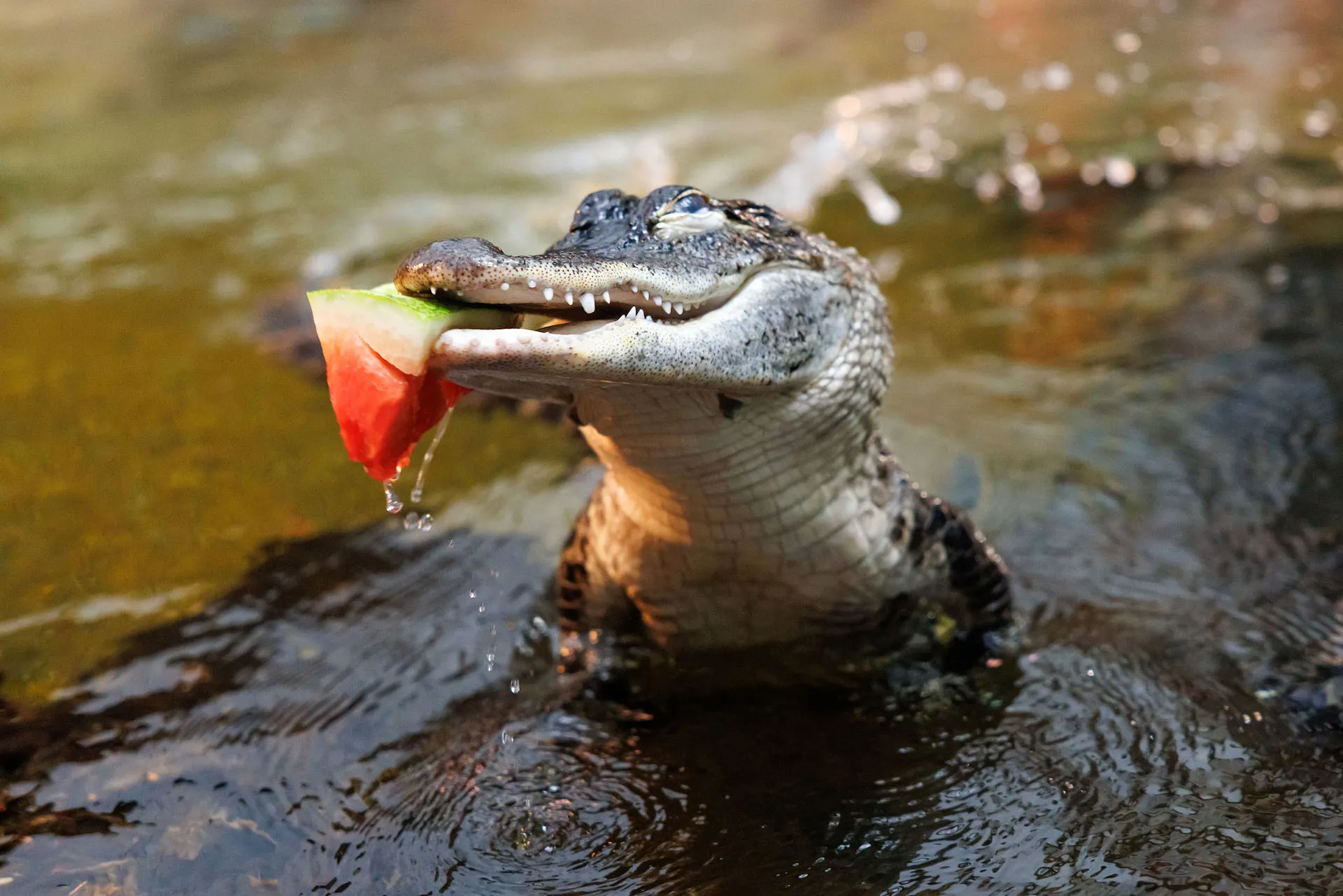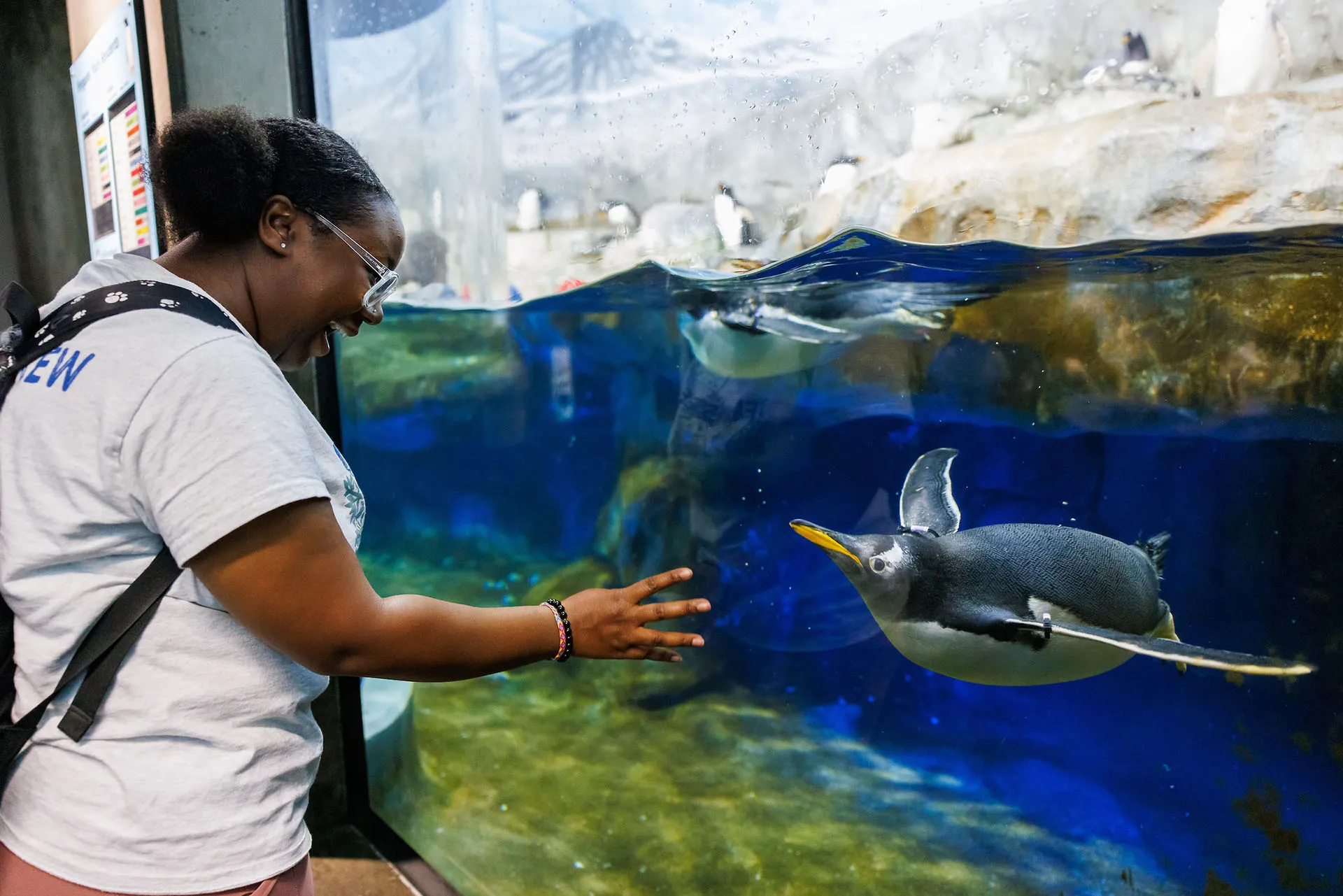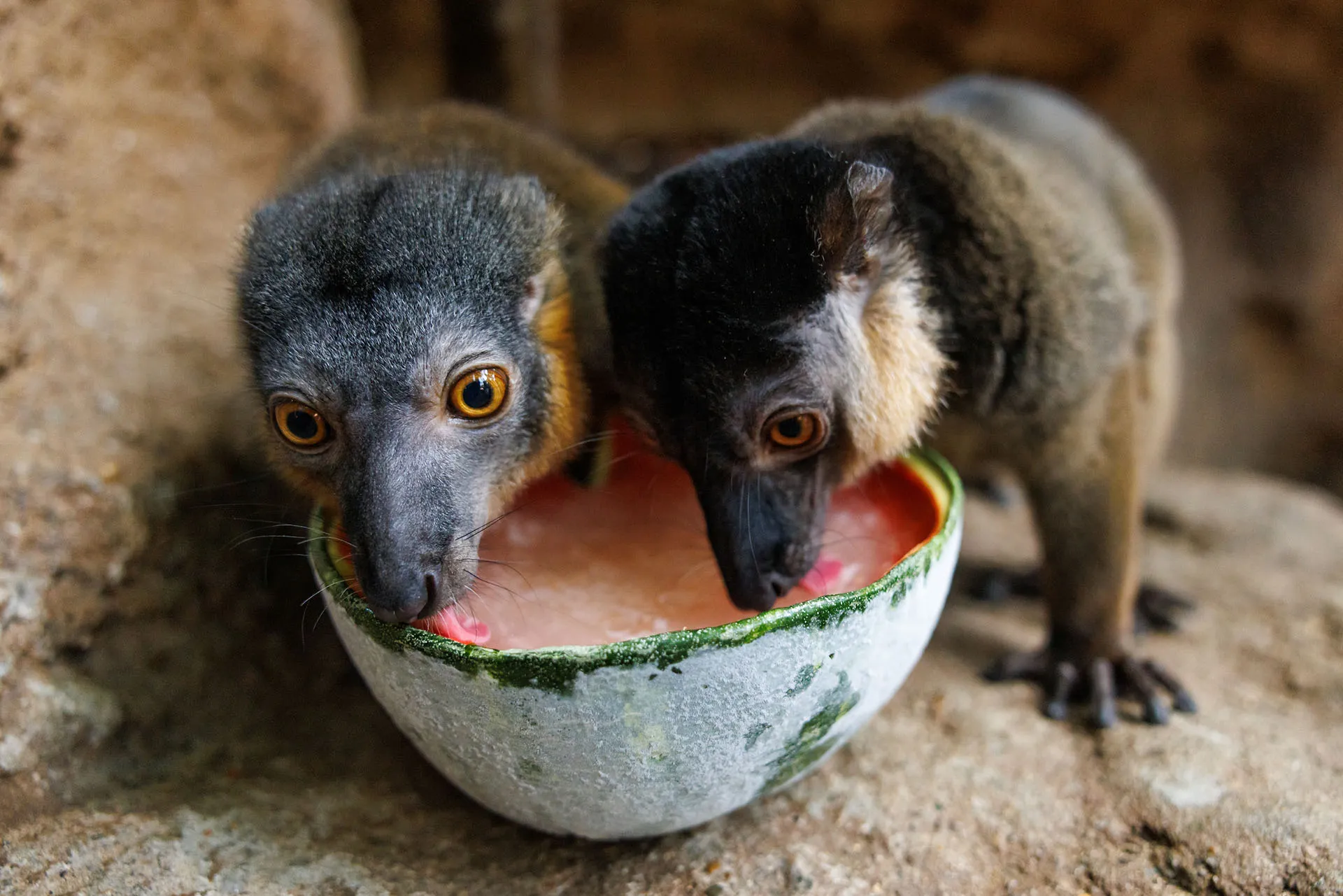Like much of the country, Chattanooga is currently sweltering in a heatwave, but even though the mercury is on a steep climb outside, keeping the animals cool and happy is a top priority at the Aquarium. In fact, it’s downright chilly in some exhibits.
Ensuring more than 12,000 Aquarium residents are comfortable and healthy during extreme temperatures is possible thanks to constant oversight by a team of experts and a sophisiticated temperature regulation system comprising a vast network of pipes, pumps and operational controls.
To beat the heat, the River Journey and Ocean Journey buildings are each equipped with two 25-ton water chillers. These devices ensure water temperatures remain stable and that the various galleries, exhibits and office spaces remain comfortable for residents, staff and guests.
The system works by circulating cool water through pipes in a closed loop through each of the Aquarium’s buildings, says Manager of Life Support Systems and HVAC Sean Hill.
“Our goal is to keep the circulating chilled water around 42 to 44 degrees, which maintains the temperatures of everything in the building,”says Hill, who is responsible for the Aquarium’s environmental systems.
Those water pipes pass near exhibits equipped with individual heat exchangers. As the cool water passes through, the exchanger removes heat, cooling the exhibit.
The River Journey building’s iconic Appalachian Cove Forest gallery replicates the habitats found in the mountains and uplands surrounding Chattanooga and the rest of Southern Appalachia. That faithful reproduction extends beyond the gallery’s outcrops of mossy boulders and towering trees. The Cove is not equipped with air conditioning or heating, meaning conditions inside the gallery – above the surface, at least – closely mirror those outside the Aquarium.
Although the Cove’s air temperature can rise during the summer, chillers and heat exchangers ensure the gallery’s water is kept comfortably cool for its many residents. Thanks to this equipment, the Cove’s mountain stream – home to three species of trout that thrive in chilly water – remain at a cool 58 degrees all year. The otters enjoy slightly warmer swims, and their pools and other water features are kept at a slightly balmier 62 degrees.
The exhibit’s namesake falls also are equipped with misting fans that provide a cool breeze over the higher tiers of the habitat to keep these playful mammals cool when they’re out of the water, too.
Temperatures can get even cooler elsewhere in the Aquarium. The Volga River exhibit in the Rivers of the World gallery, home to Russian Sturgeon and Siberian Sturgeon, stays around 54 degrees. In the Ocean Journey building, deepwater marine animals like the Spider Crab and Giant Pacific Octopus prefer temperatures of 52 and 50 degrees, respectively.


Predictably, the Aquarium’s Gentoo Penguins and Macaroni Penguins need the coldest water of all, but achieving the ideal temperature is no mean feat.
“Most exhibits don’t have their own dedicated air conditioner, but Penguins’ Rock does,” Hill says.
To maintain the bone-chilling, 43-degree water the birds require year round, the Penguins’ Rock gallery is equipped with its own 40-ton chiller. That chiller controls the water and air temperatures, ensuring these Antarctic birds are comfortable on even the hottest days.
While the Aquarium’s environmental systems do a lot of the heavy lifting in keeping its residents comfortable, the animals’ caretakers also employ creative approaches to help them beat the heat.
The otters get regular icy treats – “otter pops” packed with yummy fish or ground hamburger meat – as well as occasional “snow days” featuring drifts of manmade, crushed ice that offer chilly enrichment on hot days.
Unlike River Otter Falls, Ocean Journey’s Lemur Forest exhibit is climate-controlled, but that doesn’t mean its residents miss out on summertime treats. Frozen watermelon is a particular favorite for John and Jesse, the Aquarium’s two Red-collared Brown Lemurs.
The Forest’s creep of Radiated Tortoises aren’t left out of the summertime fun, either. They can sometimes be spotted slowly – very slowly – cooling off in the spray of a garden sprinkler or demonstrating their “rain dance” behavior under the refreshing downpour of a hose. Contrary to many guests’ assumptions, these plodding reptiles’ shells are actually remarkably sensitive, making this watery enrichment feel like a cool, stimulating massage.


